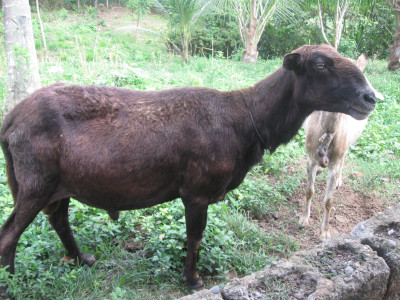
Show authors biography
Ojective. genetical characterization the creole Colombian sheep and their relationships with breeds of European origins. Materials and methods. Blood samples of 261 sheeps from the following populations were collected: Criollos de Lana (CL), Mora Colombiana (MC), Criollo de Pelo (CP), criollos mestizos (Mes), Hampshire (Hamp), Corriedale (Corr), Katahdin (Kath), Pelibuey (Pel), in 40 farms of 8 departments (Córdoba, Magdalena, Cesar, Atlántico, Valle del Cauca, Nariño, Boyacá, Tolima) and 30 samples of Merino Spanish, Merino Precoz (MP), Merinofleischschaf (MF), Segureño (Seg) and Uda (UD) de Nigeria. A total of 15 microsatellites markers were included inthis study. Results. In creole sheep, the average number of alleles was found 6.20±1.48 (CL), 7.27±1.39 (CP) y 3.60±1.55 (MC); high genetic diversity found (high heterozygosities 75%), negative values in the FIS revealed high degree of introgression; furthermore the FST revealed genetic structure in both: Creole sheep (FST=0.02**) and departments (FST=0.039**).According to genetic distance, the creole Colombian sheep differs with outsider sheep. Conclusions. The results recommend protecting the Creole sheep production because it has been threatened by constant cross with foreign breeds, which would lead to the loss of genetic identity and adapting traits of creole sheep.themselves.
Article visits 1938 | PDF visits























